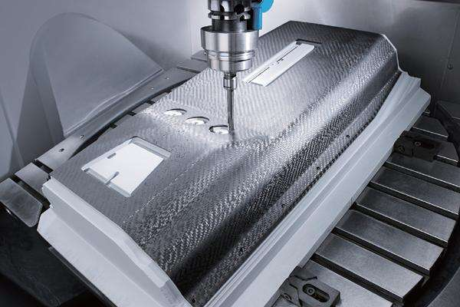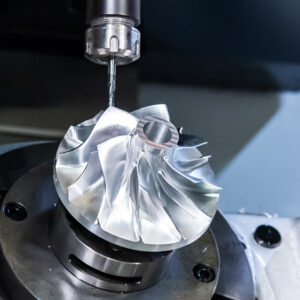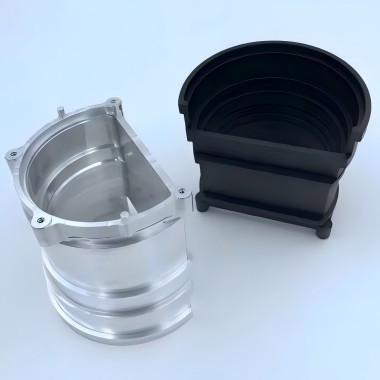CNC Milling is a method of milling by computer program controlled machine tools. In CNC milling, through pre-written programs, using the computer to control the movement of the machine tool, to achieve accurate milling of the workpiece. The following is a detailed explanation of CNC milling:

Definition and how it works
Definition: CNC milling is a machining method that uses a rotating multi-edge tool to cut a workpiece. In the machining process, the tool rotation is the main movement, and the workpiece is moved as the feed movement, or the workpiece is fixed and the tool completes the main movement and the feed movement at the same time.
Working principle: In a CNC milling machine, the cutting tool (milling cutter) is fixed on a rotating spindle. The rotation and movement of the spindle enables the CNC milling machine to perform milling operations on three or more axes. Controlled by a computer program, the tool moves on the surface of the workpiece in a predetermined path, removing material to form the desired shape and size.
Characteristics and advantages
High precision and consistency: CNC milling enables very precise tolerance control to ensure part consistency.
Efficient production: Increase production efficiency and speed through automation.
Complex geometry processing: Ability to handle complex shapes and designs, including more complex machining using multi-axis machines.
Diverse materials: can be used with a variety of metals, plastics, composite materials, etc.
Reduce waste: Precise material cutting reduces waste.
Automation: Reduces the need for manual intervention, reduces labor costs and improves quality control.
Flexibility: Easily ADAPTS to design changes for a wide range of applications.
Surface quality: Provides a good surface finish, which can be further enhanced if needed.
Application field
CNC milling is widely used in various fields of manufacturing, especially in aviation, automotive, electronics and medical equipment. It is suitable for processing a variety of complex shape parts, such as gears, molds, parts housing and so on.
Basic process
The basic process of CNC milling includes the following steps:
Parts design: design the parts according to the processing requirements, and determine the processing parameters.
Writing numerical control programs: Using special numerical control programming software, writing numerical control programs according to the designed parts and process requirements. Numerical control program includes tool path, cutting parameters, coordinate axis movement and other instructions.
Prepare the workpiece and the tool: Clamp the workpiece on the CNC milling machine and ensure that the position of the workpiece relative to the tool is accurate. Adjust the fixture, tool and table to ensure the accuracy and stability of the processing.
Run the NC program: Start the NC milling machine and run the loaded NC program. The system will automatically control the tool to move on the workpiece surface and cut according to the predetermined path.
Follow-up treatment: After processing, carry out necessary follow-up treatment, such as deburring, cleaning, inspection, etc.
In summary, CNC milling is an efficient, accurate and flexible machining method, which has a wide range of application prospects in the manufacturing industry.

The basic characteristics of CNC milling
- Flexible, universal: CNC milling machine, machining center suitable for a variety of different structural shape of the workpiece processing, can complete drilling, boring, reaming, milling plane, milling inclination, groove, milling surface (CAM), tapping and other processing.
- High machining accuracy:CNC milling machines and machining centers have high machining accuracy, which can generally ensure the accuracy of the workpiece. In addition, CNC machining also avoids the operation error of the operator, and the dimensional identity of the same batch of processed parts is good, which greatly improves the product quality.
- High production efficiency: CNC milling machine and machining center have the functions of milling machine, boring machine and drilling machine, so that the process is highly concentrated, greatly improving the production efficiency and reducing the workpiece clamping error. The spindle speed of the CNC milling machine is stepless, which is conducive to choosing the best cutting parameters. The CNC milling machine has the functions of fast forward, fast rewind and fast positioning, which can greatly reduce the maneuvering time.
- Can process complex shapes: CNC milling in addition to milling ordinary milling machine can be milling various parts of the surface, but also milling ordinary milling machine can not be milling plane curve profile and space surface profile, this is because the CNC machine has multiple feed axis linkage characteristics. 55
- Reduce the labor intensity of the operator:the CNC milling machine automatically completes the processing of the parts according to the pre-programmed processing program, and the operator does not need to carry out heavy repetitive manual operations in addition to operating the keyboard, loading and unloading tools, workpieces and intermediate measurement and observation of the operation of the machine tool, which greatly reduces the labor intensity.
The basic process of CNC milling
- Preparation stage:According to the drawings of the machining parts, determine the relevant processing data (tool track coordinate points, machining cutting amount, tool size information, etc.), according to the process plan, select the fixture, tool type, etc., to determine other auxiliary information and related equipment process information.
- Programming stage: According to the processing information, write the CNC machining program (the program is the description of the processing process), and fill in the program list.
- Program input: Input the programmed program into the numerical control system through the keyboard or other input methods. At present, with the development of computer network technology, the computer can directly communicate with the machine tool numerical control system (DNC) through the network.
- Processing stage: When the program is executed, the machine tool numerical control system will decode, store and calculate the program, and issue motion instructions to the machine tool servo mechanism to drive the moving parts of the machine tool and automatically complete the processing of the workpiece.








